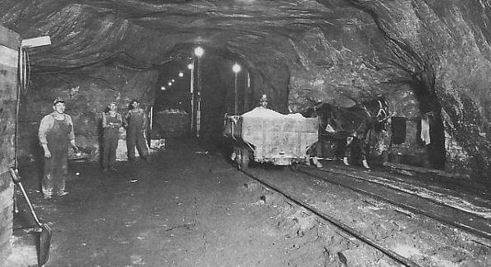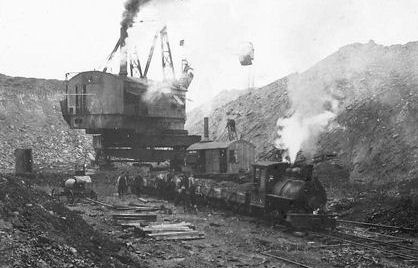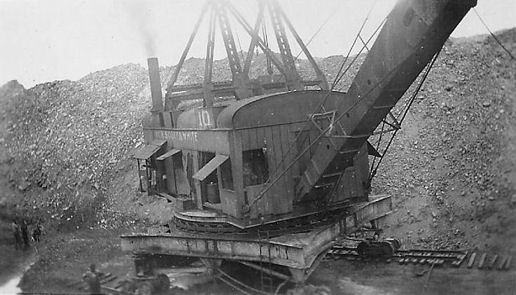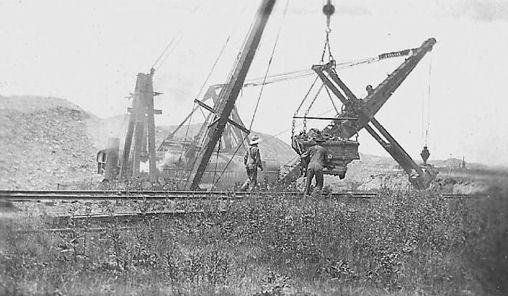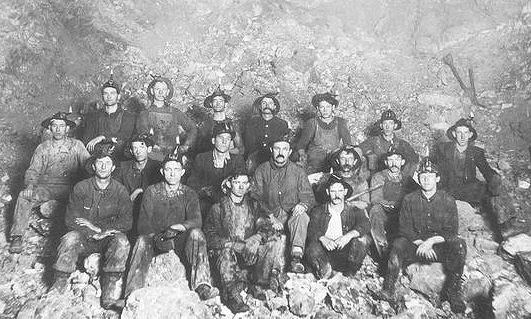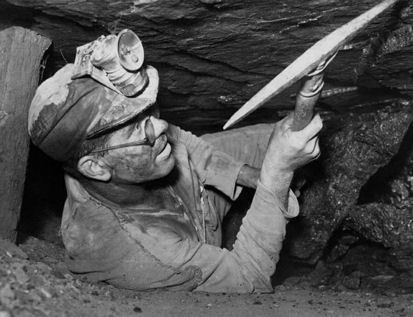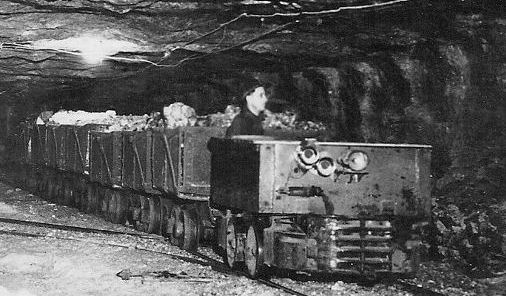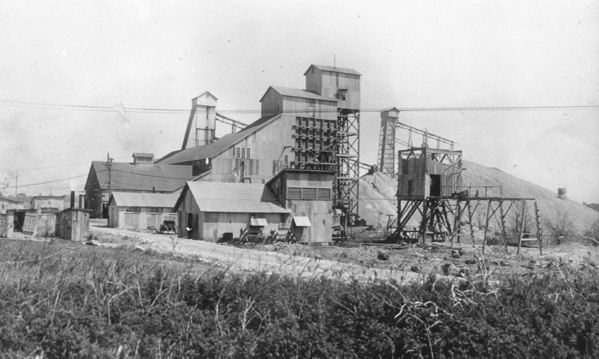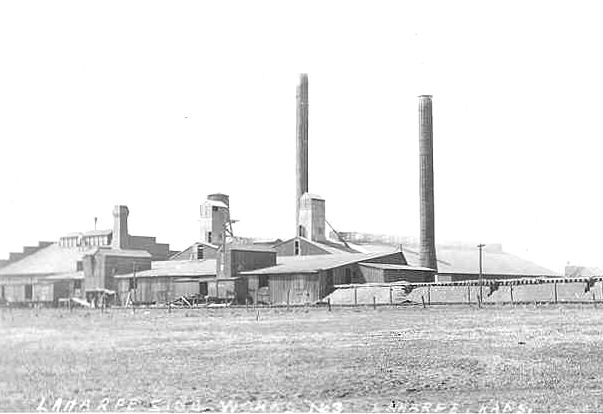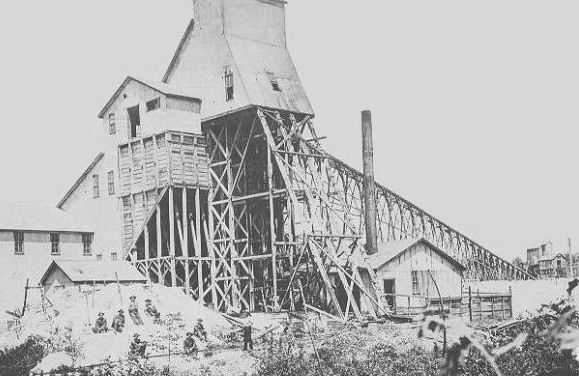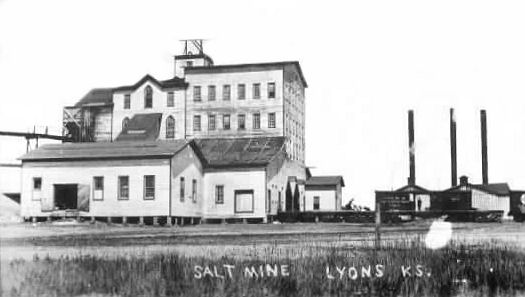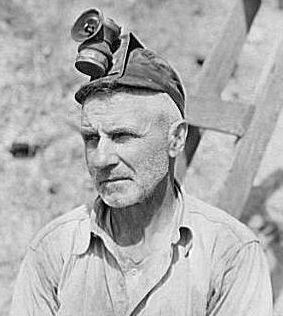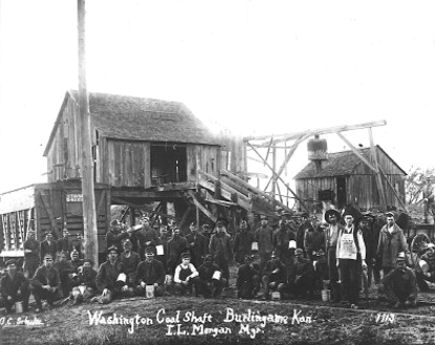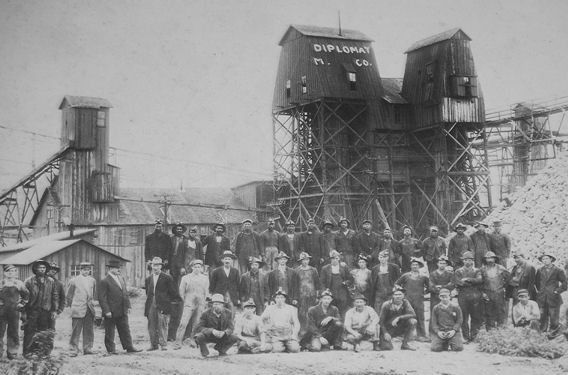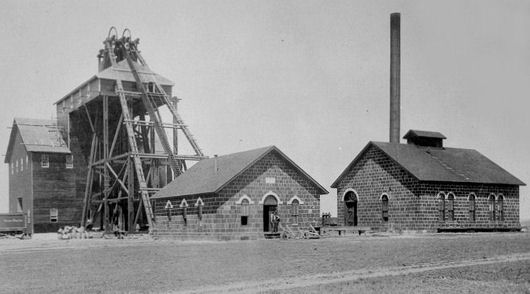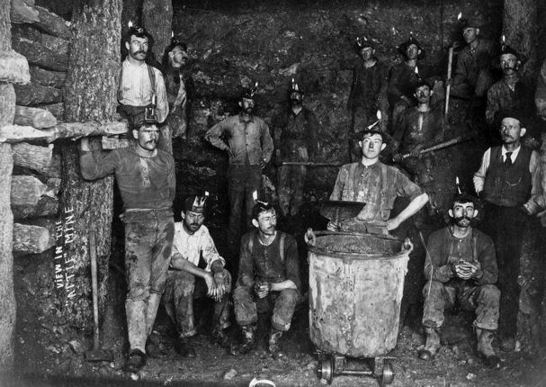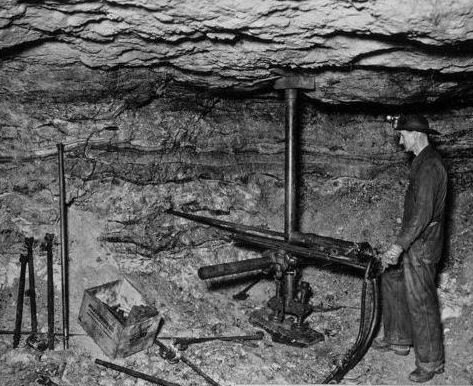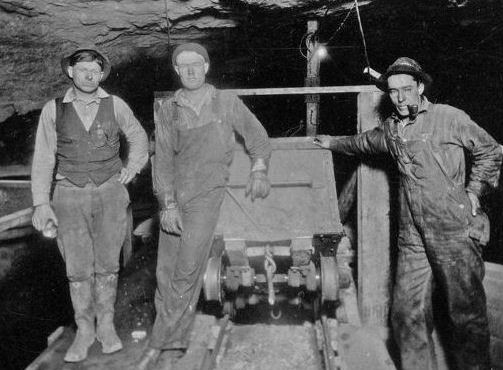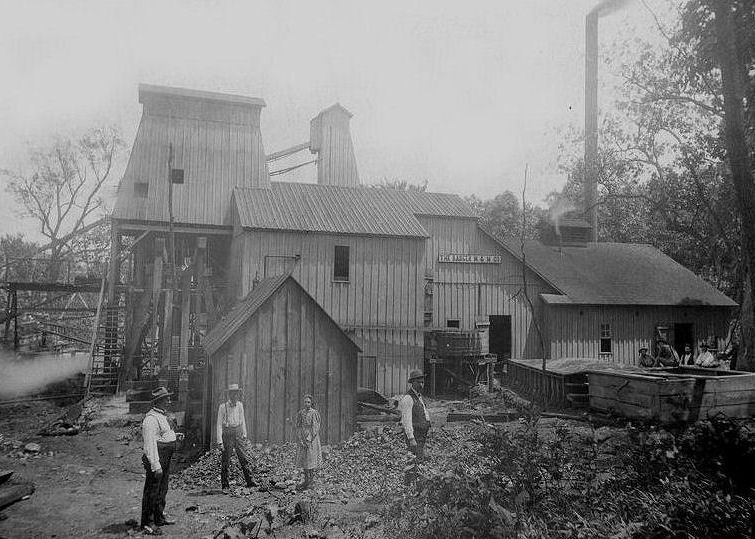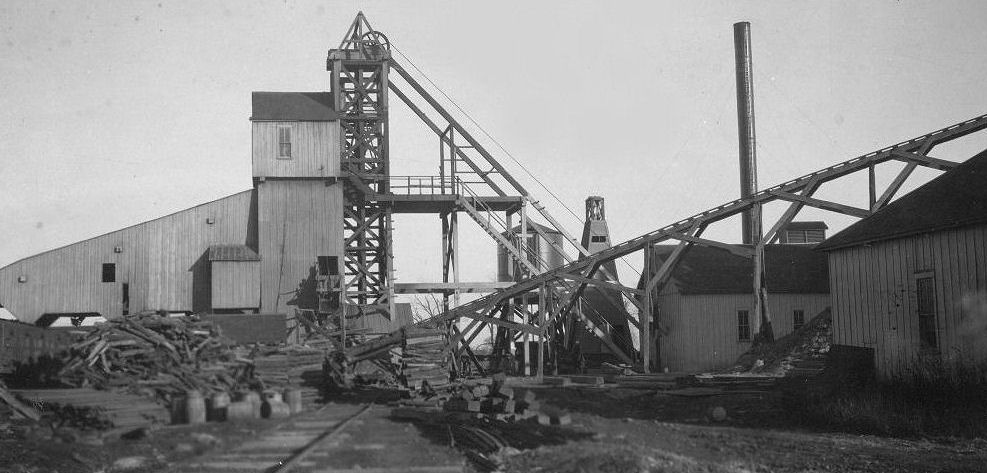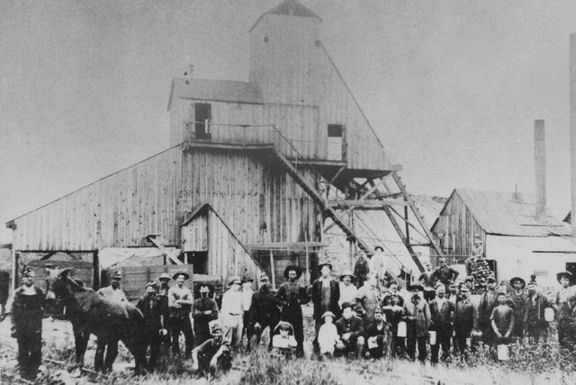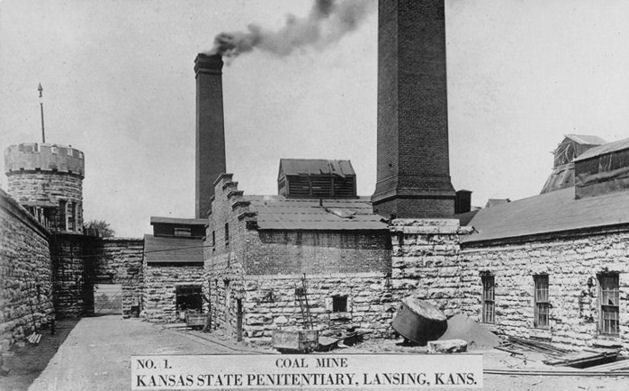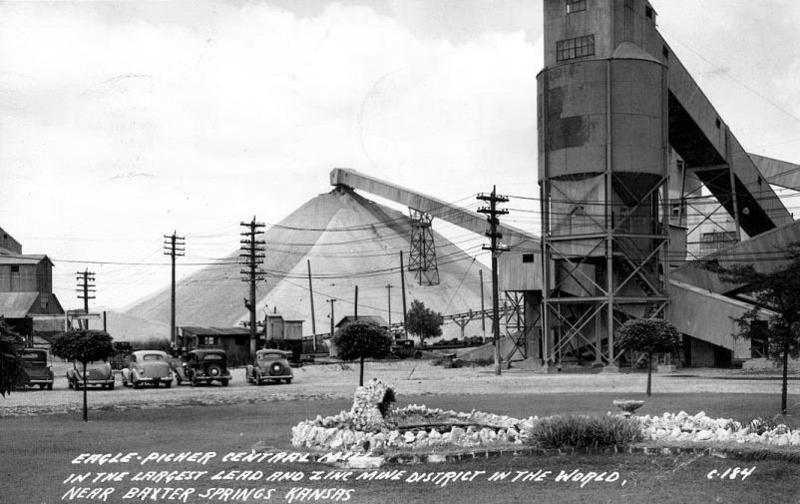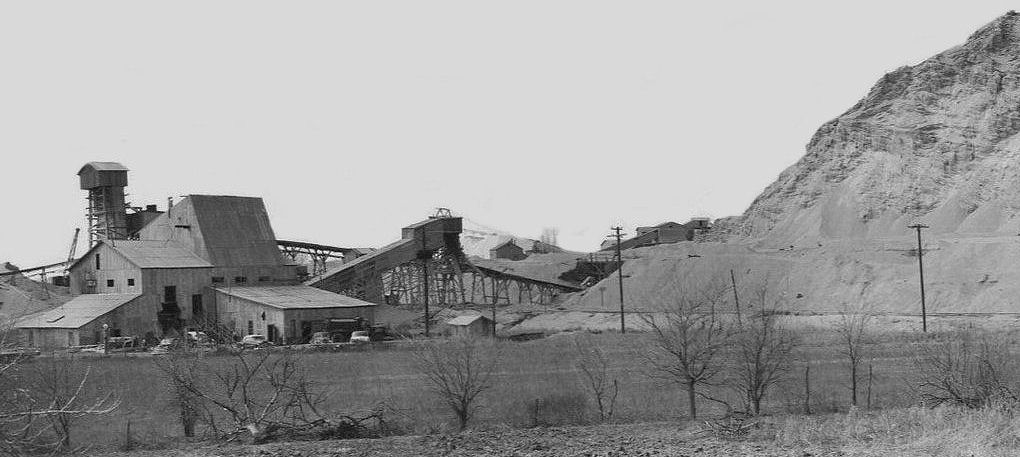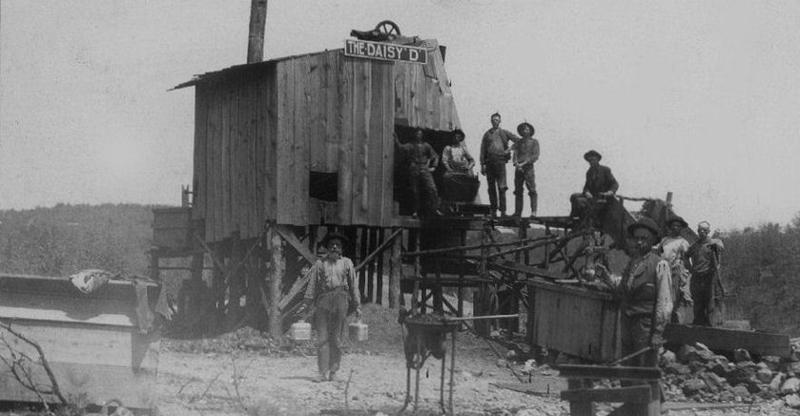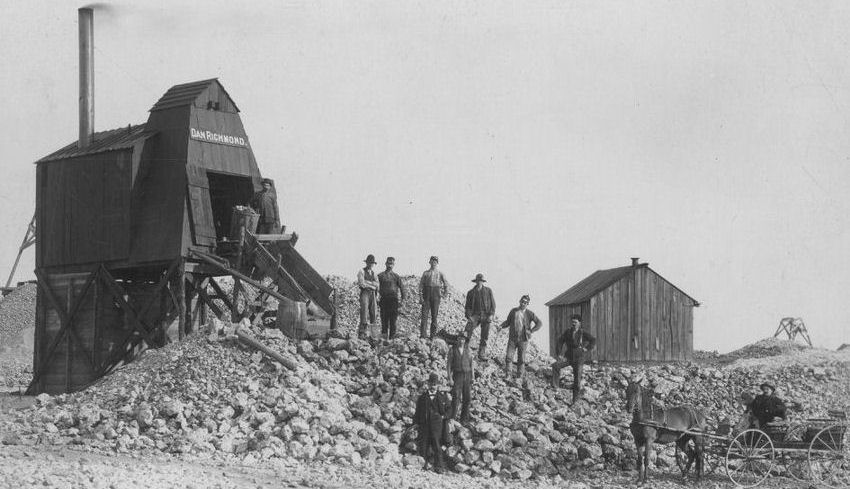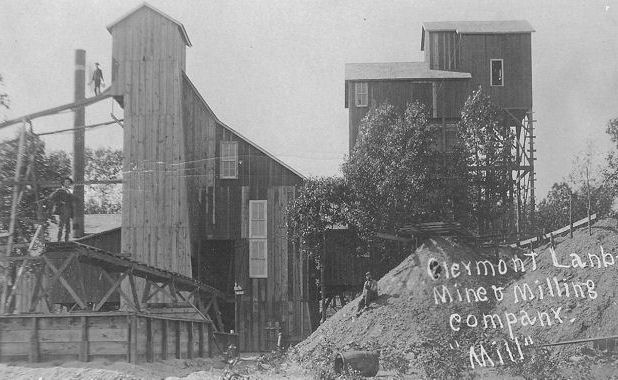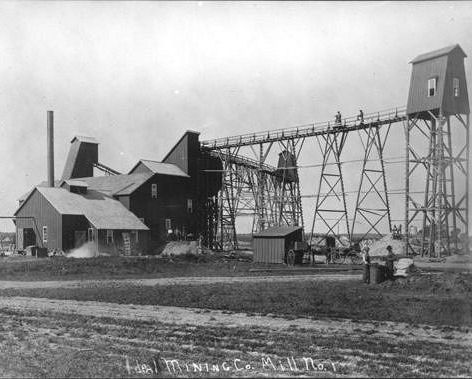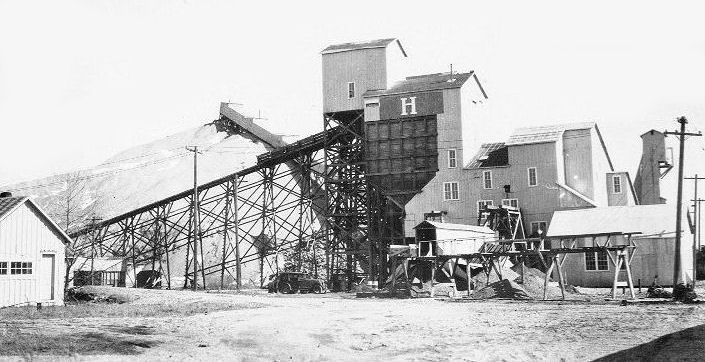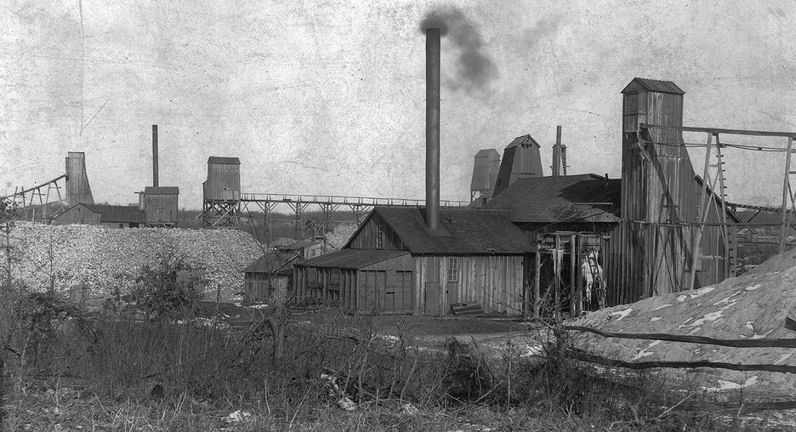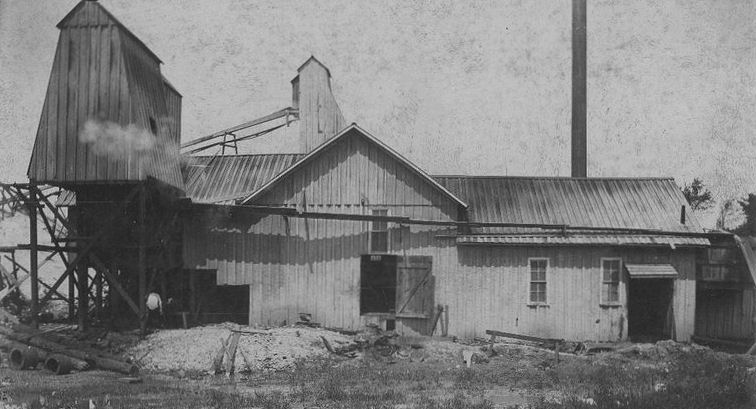KANSAS MINES
American Salt & Coal Mine - Lyons, KS
Open Pit Coal Mining - Scammon, KS
Coal mining - Pittsburg, KS
Coal mining - Pittsburg, KS
National Gypsum Co. mine, Sun City, Barber Co., KS
Miners underground - Pittsburg, KS
In the extreme southeastern corner of Cherokee County, Kansas, lead and zinc ore dominated the underground geology. Lead is a corrosion-resistant metal with many industrial uses. It is used in ammunition. Zinc also is anti-corrosive and is used in construction material. The earliest period of lead mining in Kansas was probably in Linn County in the 1830's, but the first commercial production of lead in the state was near Galena in 1877.
Most Kansas coal mining took place in the southeast counties of Cherokee, Crawford and Bourbon, where hundreds of underground shafts and above-ground strip mines were dug. Around those mines, communities and camps were built for workers and their families. At the turn of the 20th century, Cherokee County's population was at least double what it is now. The first underground coal mine shaft in southeast Kansas was constructed near the present-day town of Scammon in 1874. Although there had been other forms of mining prior to that, shaft mining became the dominant method of removing coal from the more than 20 known coal beds.
In the coal mining areas there were camps and villages with the names such as 42 Camp, Ringo, Foxtown, Capaldo, East and West Mineral, Weir and Little Italy. Lead and zinc mines near Treece along the Oklahoma border were called Turkey Fat, Tiger, Rebecca and Silver Fox.
The most important coal mining in the state was in southeast Kansas where coal beds within the Cherokee Group were extensively mined in portions of Cherokee, Crawford, and Bourbon counties. Most important of the coal beds was the Weir-Pittsburg coal, and the extensive distribution of underground mining of this coal by room-and-pillar methods. Where the Weir-Pittsburg coal was also mined by strip-mining methods total production of the Weir-Pittsburg coal represents about two-thirds of the coal mined in the state.
Another area of extensive deep mining was in Osage County where the Nodaway coal of the Wabaunsee Group was mined by both deep and surface mining methods. In this area the Bell No.4 mine south of Burlingame, in Osage County, was the last deep coal mine to operate in Kansas, closing in 1964. Deep coal mining at depths around 700+ feet occurred in eastern Leavenworth County where some mines extended under the Missouri River into the state of Missouri. Coal deep-mined in Leavenworth County for the deep mines was mainly from the Bevier coal of the Cherokee Group. The last deep mine operating in Leavenworth County was the Kansas State Prison Mine at Lansing that used convict labor and this mine closed in 1947. The old longwall mining system was used for the deep mining in Leavenworth and Osage counties as compared to the room-and-pillar mining system used in southeast Kansas coal mines.
Kansas coal miner
American Salt & Coal Mine - Lyons, KS
Galena, Baxter Springs and Treece in southeastern Cherokee County were found to be rich in lead and zinc. The area became part of the Tri-State Lead and Zinc Mining District, which includes parts of southwest Missouri and northeast Oklahoma. During the first half of the 20th century the Tri-State District was the world's leader in zinc production. The zinc-lead mines of Cherokee County, especially around the towns of Galena, Treece, and Baxter Springs, produced nearly 2.9 million tons of zinc and 0.7 million tons of lead from approximately 115 million tons of mined ore over the life of the district.
The Tri-State District, in the states of Missouri, Oklahoma and Kansas, produced nearly 12 million tons of zinc and 2.9 million tons of lead. The Tri-State mining district was the leading zinc-mining district in the world for nearly half a century, and it was also an important producer of lead, silver, cadmium, germanium, and gallium. Mining of lead-zinc ended in 1970 with the closing of the Eagle-Picher Industries Swalley Mine near Baxter Springs and the closing of the Eagle-Picher central mill at Cardin, Oklahoma.
Bill Harz Mining Co. - Cherokee County, KS - 1943
La Harpe Zinc Smelter - La Harpe, Allen County, KS
Eureka Mining Co. - Galena, KS
Coal Miner - Cherokee Co., KS
Diplomat Mine - Galena, Cherokee Co., KS
Washington Coal Mine - Burlingame, KS
Royal Salt Mine - Kanopolis, KS
Deposits of gypsum are present in several geologic units within Lower Permian rocks of central Kansas. Two gypsum mines still operate in the state, and based on the report of Kulstad and others (1956) there were at least 19 mines in ten counties in the state. National Gypsum now mines gypsum primarily by surface mining methods in northwest Barber County; however, they also have a shallow underground mine where they obtain their purest gypsum for high quality plaster. Maximum thickness of the gypsum bed in the area of the mine is about 30 feet.
Badger Mill & Mining Company - Cherokee County, KS
Mine No. 14 - Scranton, KS
Mine No. 6 of the Crowe Coal Company - NE Crawford County, KS
Extensive deposits of salt are present in the central part of the state that have been exploited for economic purposes by underground mining methods and solution mining efforts. Rock salt was first discovered in Kansas in 1887 while individuals were exploring for oil and gas. Three mining companies are presently mining the salt by underground mining methods including the Hutchinson Salt Company (Reno County), Lyons Salt Company (Rice County), and the Independent Salt Company (Ellsworth County). Depths of mining range from 645 feet with the Hutchinson Salt Company to 1045 feet with the Lyons Salt Company. At least five additional deep mines have operated in Kansas that are no longer mining salt. Among these five mines, two operated in Rice County, two in Ellsworth County, and one in Kingman County.
Sheridan Coal Company Mine No. 7 - Crawford County, KS
Eagle Picher Miners - Kansas
Eagle Picher Attie Mine - KS
Eagle Picher Lead Co. - KS
Ballard Mine - Baxter Springs, KS
Daisy D Mine in Cherokee County, Kansas
Dan Richmond Mine - Galena, KS
Ideal Mining Co. - Cherokee County, KS
Clermont Land, Mine & Milling Company Mill - Galena, KS
Frank Hartley Mine - Baxter Springs, KS
Unidentified Mine - Cherokee County, KS
Willow Mine - Central City, Kansas
